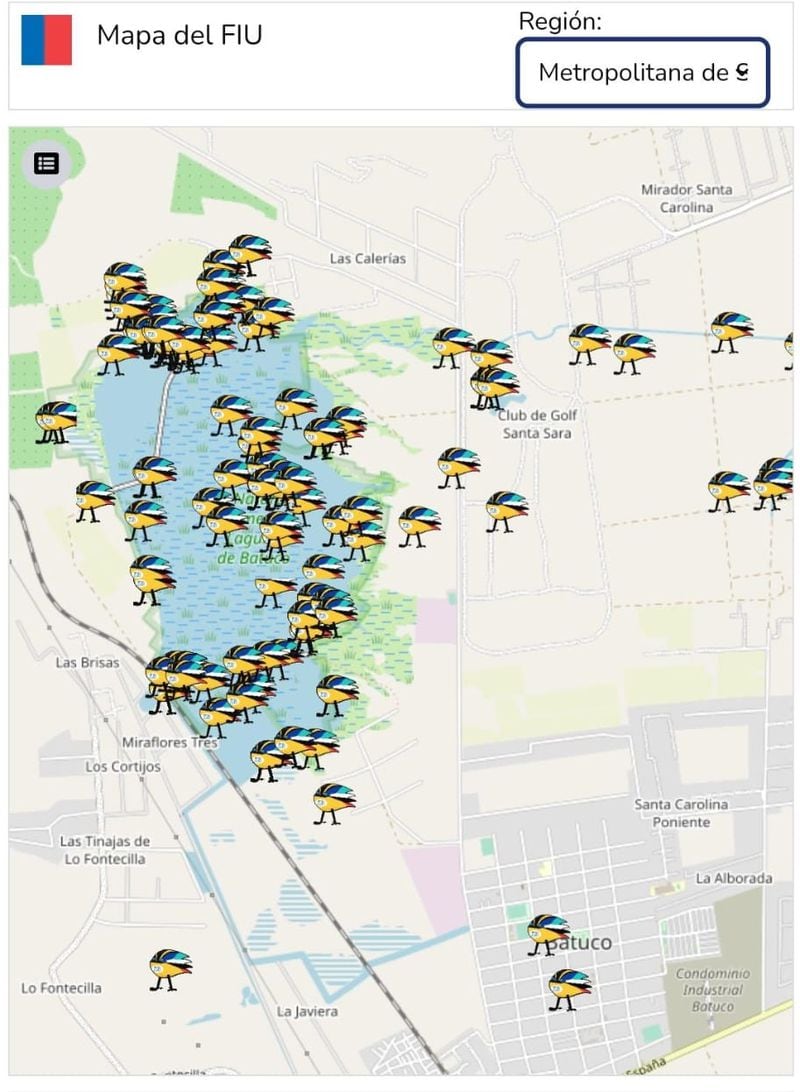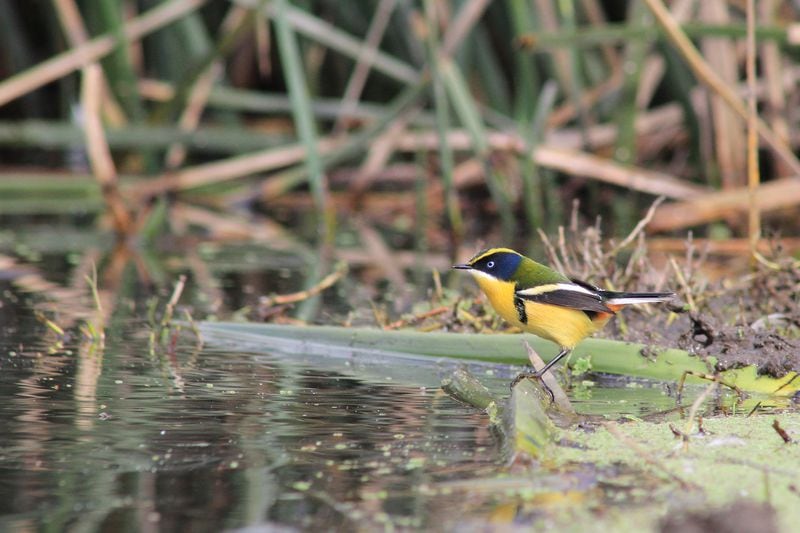From the IDE Chile of the Ministry of National Assets they have launched a map of the country where you can spot Fiu, the famous seven-colored bird that stole hearts during the 2023 Pan American and Parapan American Games.
“Fiu,” the seven-colored bird that stole hearts at the 2023 Pan American and Parapan American Games, lives across much of Chile and South America, and even Pablo Neruda dedicated a poem to it. The official mascot has transcended the event and has become part of the social collective, acquiring significant importance and relevance.
This bird has been recognized by different names depending on geography and culture. For example, the Mapuche culture recognizes it as “Trif-Trif Trome” and the Guarani people as “Paparí”. In our country it is commonly known as “Matraca”, while in Argentina and Paraguay it is known as “Tachuri seiscolores” and in Peru as “Sietecolores de la totora”.
Before becoming a symbol of Santiago 2023, the seven colors, the bird that made Fiu a reality, were not very well known in the country. The reality is that it is one of the most colorful birds in Chile and is widely distributed in South America. Passing through southern Ecuador, Peru, Bolivia, Uruguay, Paraguay, southeastern Brazil and also Argentina. In Chile, it lives most often between Atacama and Aysén. but sporadically, some individuals even reach Magellan.
Its habitat is characterized by areas of dense and bushy vegetation, generally associated with wetlands, such as river banks, ravines, swamps and wetlands. It is also found in scrub and grassland areas. And even though its viewing season ended in the Chilean capital, there are some places where it can be visited.
For all Fiu lovers, FDI Chile (Geospatial Data Infrastructure) of the Ministry of National Assets geolocated the points from where it is possible to see the seven-colored bird (Tachuris rubrigastra) which is now the heritage of all Chileans.
Minister Marcela Sandoval said: “Now that the Pan American and Parapan American Games are over and Fiu plans to visit all the municipalities of Chile, it is important to emphasize that her true home is much closer than we think. »

IDE Chile carried out a map generated from data extracted from the Global Biodiversity Information System from 2006 to date, where They show the places where Fiu lives, generally humid and vegetated places, such as wetlands, river banks, estuaries and/or deltas.
Fiu’s map reveals, for example, that There is a high concentration of sightings in the Batuco lagoon and on the edges of the beach. (in the central area), but it is also possible to find it in almost all regions of the country. In total, the map reflects more than 15,000 observations.
The Batuco Lagoon is located in the metropolitan area, approximately 30 kilometers from Santiago. and, next to Fiu, different species of aquatic birds live, such as swans, herons and coots.
You can also see a bird in the Cartagena Lagoon in the Valparaíso region , which is composed of the lagoon, the estuary and the estuary. You can visit all year round, but it is recommended to go in spring and summer for a better chance of seeing more birds.
Continuing with the Valparaíso region, you can visit the Albufera lagoon in the El Yali national reserve, and a few kilometers south of Santo Domingo is the Tricao Park and Giverny wetland. In the Maule region, there are Wetlands and dunes of Putú located 19 kilometers north of Constitución and the Torca Lagoon National Reserve where you can see the bird.
This data was obtained by downloading the Fiu database using the QGIS software (free geospatial information system) and loading the data into the IDE software “Geonodo” (open source software), to specifically report where the seven colors were observed. In this way, they have also optimized the map so that it is better visible on mobile phones.
“Let us continue to enjoy the seven-colored bird that generated so much joy and emotion in us during the greatest sporting festival in America, while informing ourselves“We care for, conserve and protect these places which are so important for the richness of their ecosystems, their biodiversity and the value of their landscapes.” commented Minister Sandoval.
To see the full map, visit https://www.geoportal.cl/idechile/dashboard/31
The seven colors: the unknown bird that stole the show at the Pan American Games
This bird resides primarily in wetlands, where it nests its eggs and feeds primarily on insects. It belongs to the family of flycatchers (Tyrannidae), which have the particularity of catching flies on the fly.
Its main predators are birds of prey, among which ruffs and falcons stand out. There are records of predation of the seven-colored bird by kestrels or peregrine falcons. However, the seven colors are so small that they are very difficult to capture.

In the case of the seven colors, both the male and female have these colors in their feathers, which even gives them their name. It is the most striking species of its family. Generally, other types of flycatcher birds tend to be duller in color.
The Fiu effect was not only felt in the social field, but also took an environmental step forward. After two years of work, The Sietecolores will now be able to benefit from a new protected site for themselves and for the different species that inhabit the wetlands. This time, an aquifer area located in Llolleo, municipality of San Antonio, will officially become a protected urban wetland. If people want to see the seven-colored bird, it’s very likely they’ll need to go to a wetland area, preferably with cattails and reflecting pools nearby.
Without a doubt, the seven colors will now take center stage. Not only as an icon of the Pan American Games, but also as an emblem of ecosystem conservation throughout much of the region. Pablo Neruda dedicated a poem to it in his book “The Art of Birds”. where he compares it to “a little flag” and “a rainbow scale”.
Source: Latercera
I am David Jack and I have been working in the news industry for over 10 years. As an experienced journalist, I specialize in covering sports news with a focus on golf. My articles have been published by some of the most respected publications in the world including The New York Times and Sports Illustrated.


